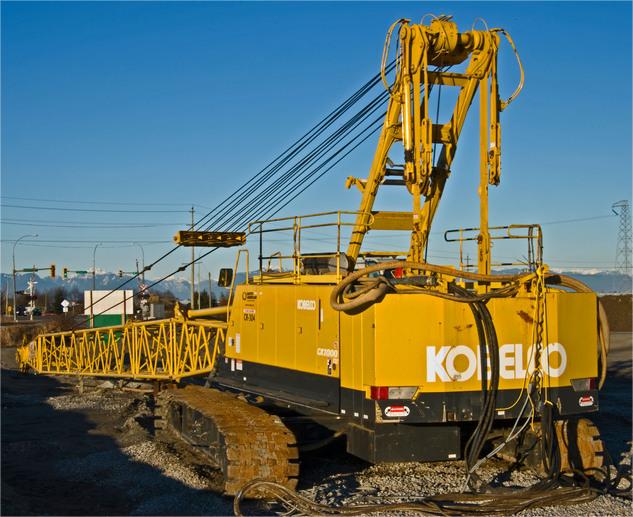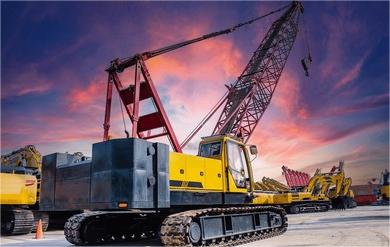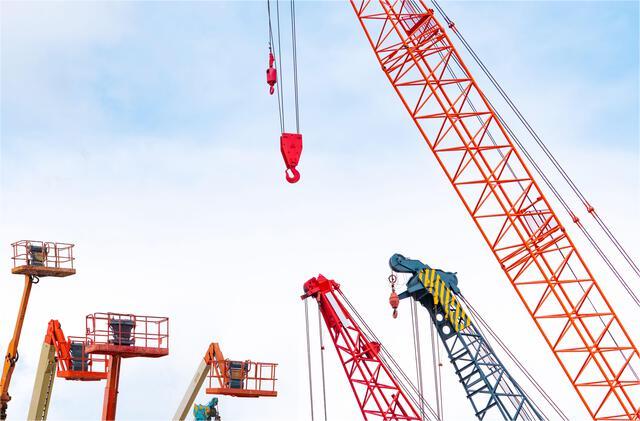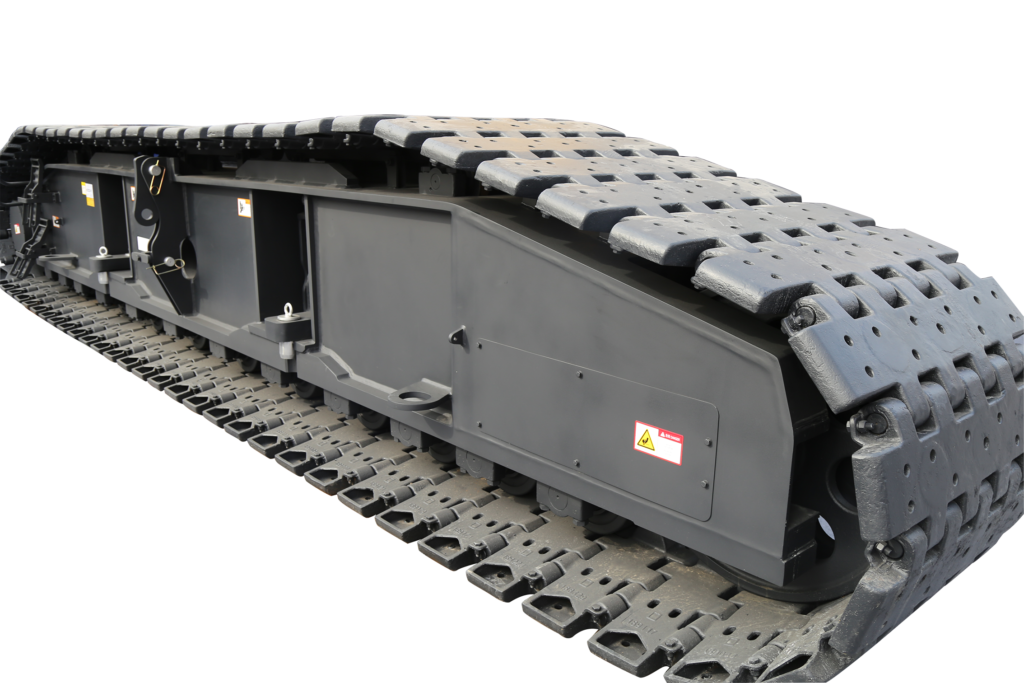When it comes to crawler cranes, the maximum boom angle is a critical factor that significantly impacts their lifting capacity and operational safety. This key parameter refers to the maximum angle at which the crane’s boom can be extended, allowing it to reach greater heights and handle heavier loads. By carefully determining and adhering to the appropriate maximum boom angle, operators ensure optimal stability and prevent potential accidents during lifting operations. Understanding the significance of the maximum crane boom angle is essential for maximizing efficiency and maintaining a safe working environment on construction sites.
what is a crane boom?

The crane boom of a crawler crane is a robust and versatile structural element that extends vertically from the crawler chassis. It is typically composed of steel trusses or lattice sections, designed to provide exceptional strength and stability during lifting operations.
The boom consists of several sections, including the base section, intermediate sections, and the tip section. These sections can be hydraulically extended or retracted, allowing the crane to achieve different boom lengths based on the specific lifting requirements.
At the end of the boom, there is typically a sheave or pulley system, along with a hook or other lifting attachments. This configuration enables the crane to hoist and maneuver heavy loads with precision and control.
different types of crane boom
Crane booms are essential components of lifting equipment that play a crucial role in various industries and construction projects. They are responsible for extending the reach and lifting capacity of cranes, enabling them to handle heavy loads and perform intricate tasks. Different types of crane booms are designed to meet specific operational requirements, offering unique features and capabilities for diverse working environments.

Full-span jib crane boom
The full-span jib crane boom is a structural component that extends vertically from the crane’s chassis. It is characterized by its long and large-span design, enabling it to reach considerable distances for lifting operations. This type of boom is commonly found in crawler cranes used in complex terrains such as mines and oil fields. Its main advantage lies in its ability to handle long-range lifting requirements. However, due to its extended length, the crane’s overall weight is relatively higher, making it less suitable for short-distance, high-frequency lifting operations.
Main boom crane boom
The main boom crane boom is a versatile and strong structural element that provides high lifting capacity. It is commonly used in urban construction and large-scale engineering projects. This type of boom is designed with a relatively shorter length and lighter weight, allowing for frequent lifting operations. It offers flexibility and maneuverability, making it suitable for various applications. In some cases, the main boom can be equipped with a folding mechanism, enabling easy operation in confined spaces.


Tower jib crane boom
The tower jib crane boom is specifically designed for high altitude lifting operations. It is commonly seen in applications such as high-rise buildings and bridge construction. This type of boom features a tall and sturdy structure, enabling the crane to handle lifting tasks at significant heights. Additional equipment, such as winches, spreader beams, and anemometers, can be installed on the jib to enhance efficiency and safety. However, the tower jib crane boom’s overall height requires special permits and road construction during transportation, limiting its usability to specific scenarios.
Folding boom crane boom
The folding boom crane boom is designed with a foldable mechanism that allows it to operate in small and restricted spaces. It is commonly used in tasks such as power facility maintenance and urban construction, where maneuverability is essential. The folded boom is shorter and more compact, resulting in a lighter overall weight. This type of boom offers versatility in lifting operations, but its shorter length does impose limitations on lifting capacity, making it less suitable for high-altitude and long-distance lifting tasks.

the angle of crane boom

The angle of the crane boom is a critical aspect of crane operations, and it consists of two key angles: the boom elevation angle and the boom lowering angle.
crane boom elevation angle
The boom elevation angle refers to the angle formed between the crane boom and the horizontal plane when the boom is raised upwards. It typically ranges from 0° to 80°, allowing the crane to reach high vertical positions. During high-altitude operations, it is vital to master and control the boom elevation angle accurately. By adjusting the angle based on the height of the object and the crane’s power conditions, operators can ensure that the boom reaches the desired height safely and efficiently. Proper adjustment of the elevation angle enhances stability and guarantees the safety of the lifting operation.
crane boom lowering angle
On the other hand, the boom lowering angle pertains to the angle formed between the crane boom and the horizontal plane when the boom is inclined downwards. This angle typically ranges from 0° to 20°, facilitating operations at lower heights or close to the ground. When working at lower heights, it is crucial to adjust the boom lowering angle appropriately. If the angle is too steep, the crane may lose balance, leading to potential safety issues. By carefully controlling the lowering angle, operators can maintain stability and prevent accidents during operations in confined or low-height spaces.
the maximum crane boom angle of crawler crane

The maximum crane boom angle is a critical factor that determines the range of tilting and positioning capabilities of a crane. By being able to tilt the crane boom, operators gain control over the orientation and angle of suspended objects, enabling precise and efficient lifting operations. However, it is essential to consider several key aspects during the process of boom tilting to ensure safe and effective use of this operational feature. These aspects play a crucial role in maintaining stability, controlling load movement, and preventing any potential risks or accidents.
Forward Tilt: The boom tilts forward towards the front of the crane, enabling the suspended load to tilt forward. The degree of forward tilt depends on the type of crane boom and working conditions, typically not exceeding 30 degrees.
Rearward Tilt: The boom tilts backward towards the rear of the crane, allowing the suspended load to tilt backward. The degree of rearward tilt also varies depending on the type of crane boom and working conditions, generally not exceeding 15 degrees.
Sideways Tilt: By tilting the boom at a certain angle from the vertical direction, it is possible to achieve sideways tilting of the suspended load. The sideways tilt angle is usually not more than 45 degrees.
Tilt Angle: The maximum tilt angle varies for different crane booms but generally ranges around 60 degrees. Exceeding the tilt angle limit can affect the stability and safety of the boom.
Find more at Value Crane

The maximum crane boom angle may vary depending on the specific model and type. The information provided above is a general overview and may not apply to all crawler cranes. It is important to consult the manufacturer’s specifications or contact the experts at Value Crane for accurate and detailed information regarding the crane boom angle of a specific crawler crane model. The team at Value Crane is available to assist with any further inquiries you may have. Feel free to reach out to us for personalized assistance and guidance.







